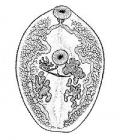» Site Navigation

0 members and 692 guests
No Members online
Most users ever online was 47,180, 07-16-2025 at 05:30 PM.
» Today's Birthdays

» Stats

Members: 75,908
Threads: 249,107
Posts: 2,572,126
Top Poster: JLC (31,651)
|
-
Registered User


Thank you everybody for your feedback!
I was asking about the habitat suitability because all of the literature I could find vaguely suggests that both ringnecks and brownsnakes are "adapted to a wide range of habitats", or something to that effect, and that they have been found in sphagnum bogs before. I couldn't find anything about whether they are permanent residents or not.
All the same, after feedback and more research I've distilled my options down to just two things:
1. Get either a ringneck, dekay's brown, or a foxsnake in a simplistic "grassland" setup, which is basically just soil [no additives] strewn with raw grass seed [no fertilizer crap]. Heat will be provided from both a dedicated plant light and a ceramic heater. I've used this setup successfully for small skinks and terrestrial crabs [Gecarcinus quadratus]. It prioritizes the animal over the plants, and if the grass dies I just plant more grass seed. A basking spot with no grass is placed at the "hot end" with the ceramic heater, so the issue of the heat source drying out the plants is mostly negated.
2. Set up a "disguised terrarium" for my sumatran short tail python and place a couple of tropical pitcher plants in with it, as devised by California Carnivores... or at least I think that's where it was devised. Basically plants remain in separate pots, only the pots are disguised or buried in substrate. This makes plant maintenance much easier, and they can be kept moist without turning the entire terrarium into a swamp.
This option has a few perks; I already own the python and I don't need to go searching for a species that is relatively obscure in the pet trade. It shares its native habitat in Sumatra with many types of tropical pitcher plant that are readily obtainable in the plant trade, and the snake itself is rather inactive and unlike to overly disturb or damage any plant that is well positioned.
My other options for snakes that I own are more limited. My sand boa is anerythristic, so making a "naturalistic" setup for an unnatural color morph is pointless.
I have rubber boas, but they spend practically all of their time buried as far into the substrate as they can possibly go; having plants in the way would be a massive hassle since I use separate feeding containers for them. Rubber boas make wonderful handling and demonstration animals for students, but they only work for that purpose if they're easy to access without a lot of plants or decor in the way. Their tendency to hide also makes them terrible hands-off, display-only animals.
I have a young Argentine boa, but I'm not particularly familiar with what kind of suitable South American plants it can share its home with. He is also much more active and likely to damage delicate plants, and is growing quickly to the point where space restrictions in a classroom would probably become an insurmountable problem.
Last edited by Paragonimus westerma; 07-21-2016 at 12:41 PM.
-
 Posting Permissions
Posting Permissions
- You may not post new threads
- You may not post replies
- You may not post attachments
- You may not edit your posts
-
Forum Rules
|










 Reply With Quote
Reply With Quote